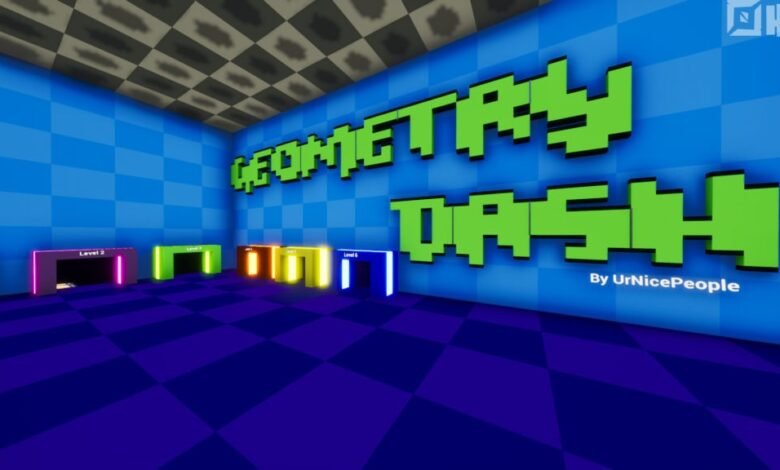Exploring the Fascinating World of Geometry Spot: A Comprehensive Look

Geometry, one of the oldest branches of mathematics, has captivated the minds of scholars and thinkers for thousands of years. From the early contributions of ancient Egyptians and Greeks to the cutting-edge work of modern-day mathematicians, geometry has been instrumental in understanding and describing the physical world around us. The concept of a “Geometry Spot” can refer to various elements within this field, from specific geometric points to a dedicated platform for exploring and teaching geometry. This article will explore the rich history, key concepts, applications, and modern advancements in geometry, illustrating how a “Geometry Spot” could become a central hub for learning and discovery.
The Historical Roots of Geometry
Geometry’s origins are deeply rooted in ancient civilizations. The term “geometry” is derived from the Greek words “geo” (meaning earth) and “metron” (meaning measure). Early civilizations, such as the Egyptians, utilized geometric principles to address practical challenges like land measurement, construction, and astronomy.
- Egyptian Contributions: The Egyptians used geometry extensively in building monumental structures such as the pyramids. They also developed methods for measuring land, which was crucial for agriculture and property division, especially after the Nile River’s annual floods.
- Greek Contributions: The Greeks transformed geometry into a formalized branch of mathematics. Renowned figures like Euclid, Pythagoras, and Archimedes made significant contributions, with Euclid’s “Elements” serving as one of the most influential works in mathematical history, laying the groundwork for what is now known as Euclidean geometry.
Core Concepts in Geometry
Geometry is a vast and intricate field, encompassing numerous concepts and subfields. Some fundamental concepts include:
- Points, Lines, and Planes: These are the foundational elements of geometry. A point represents a specific location in space, a line is a one-dimensional figure extending infinitely in both directions, and a plane is a flat, two-dimensional surface that also extends infinitely.
- Angles and Triangles: Angles are formed when two lines intersect, and triangles are polygons with three sides. The study of triangles, including the famous Pythagorean theorem, is a central aspect of geometry.
- Polygons and Circles: Polygons are multi-sided figures, while circles are defined by a set of points equidistant from a central point. Both Euclidean and non-Euclidean geometries explore the properties of these shapes.
- Solid Geometry: This branch focuses on three-dimensional figures like cubes, spheres, and pyramids, studying properties such as volume and surface area.
Geometry’s Influence in Art and Architecture
Geometry has long been intertwined with art and architecture, influencing principles of symmetry, proportion, and perspective.
- Islamic Art: Known for its intricate geometric patterns, Islamic art utilizes these designs not just decoratively but also with deep spiritual and philosophical meaning.
- Renaissance Art: During the Renaissance, artists like Leonardo da Vinci and Michelangelo applied geometric principles to achieve realistic proportions and perspectives, with the “golden ratio” being a notable example.
- Modern Architecture: Today’s architecture often incorporates geometric shapes and forms, using concepts like fractals in complex structures and topology in urban planning.
Applications of Geometry in Science and Technology
Beyond art and architecture, geometry is essential in numerous scientific and technological fields.
- Astronomy: For centuries, geometry has been used to map stars, calculate distances between celestial bodies, and understand the universe’s structure. Johannes Kepler’s use of geometric models to describe planetary motion underscores geometry’s importance in astronomy.
- Physics: Geometry is fundamental in physics for understanding the shape and behavior of objects in space. Einstein’s theory of general relativity, which describes gravity as the curvature of spacetime, is rooted in non-Euclidean geometry.
- Computer Graphics: In the digital age, geometry underpins computer graphics, animation, and game design, where algorithms use geometric principles to create realistic images and simulations.
- Robotics and Engineering: In these fields, geometry is crucial for designing and analyzing mechanical systems, optimizing structures, and solving complex problems related to motion and force.
The Educational Value of Geometry
Geometry is a cornerstone of mathematics education, critical for developing skills in critical thinking, spatial reasoning, and problem-solving. It also provides a foundation for more advanced mathematical studies.
- Visual Learning: Geometry often involves visual learning through diagrams, models, and other visual aids, helping students grasp abstract concepts more concretely.
- Logical Reasoning: Geometric proofs teach students to derive conclusions from given premises, fostering logical reasoning and analytical thinking.
- Real-World Applications: Teaching geometry with real-world applications, such as in architecture and design, makes the subject more engaging and relevant to students.
The Future of Geometry: A Modern Outlook
As we progress into the 21st century, geometry continues to evolve, with new discoveries and applications emerging.
- Computational Geometry: This branch focuses on algorithms and their implementation in computer systems, with applications in robotics, computer-aided design, and geographic information systems (GIS).
- Quantum Geometry: In theoretical physics, quantum geometry explores the geometric properties of space at the quantum level, potentially offering new insights into the universe’s fundamental nature.
- Educational Technology: The rise of educational technology has led to interactive tools and platforms that make learning geometry more accessible and engaging. Virtual reality (VR) and augmented reality (AR) are being used to create immersive learning experiences, allowing students to explore geometric concepts in three-dimensional space.
Geometry Spot: A Hub for Exploration and Learning
Given the expansive nature of geometry, a “Geometry Spot” could serve as a dedicated space for learning, exploring, and discussing all aspects of geometry. Whether as a physical space, an online platform, or a community, a Geometry Spot would offer resources, tutorials, and interactive tools for students, educators, and enthusiasts alike.
- Online Platforms: An online Geometry Spot could feature interactive lessons, problem-solving challenges, and forums for discussion, along with resources for teachers, such as lesson plans and assessment tools.
- Workshops and Seminars: A physical Geometry Spot could host workshops, seminars, and exhibitions on various geometry-related topics, catering to different age groups and skill levels.
- Research and Collaboration: For professionals and researchers, a Geometry Spot could be a hub for collaboration and innovation, facilitating the sharing of ideas and fostering interdisciplinary research.
Conclusion
Geometry is a field with a rich history and a wide range of applications, from ancient architecture to modern technology. A “Geometry Spot” could become a place where people come together to learn, explore, and celebrate this fascinating branch of mathematics. Whether through online resources, educational workshops, or collaborative research, a Geometry Spot would serve as a focal point for anyone interested in the world of geometry. As science and technology continue to advance, the importance of geometry will only grow, making it an essential field for future generations to study and appreciate.
READ MORE Aiyifan



